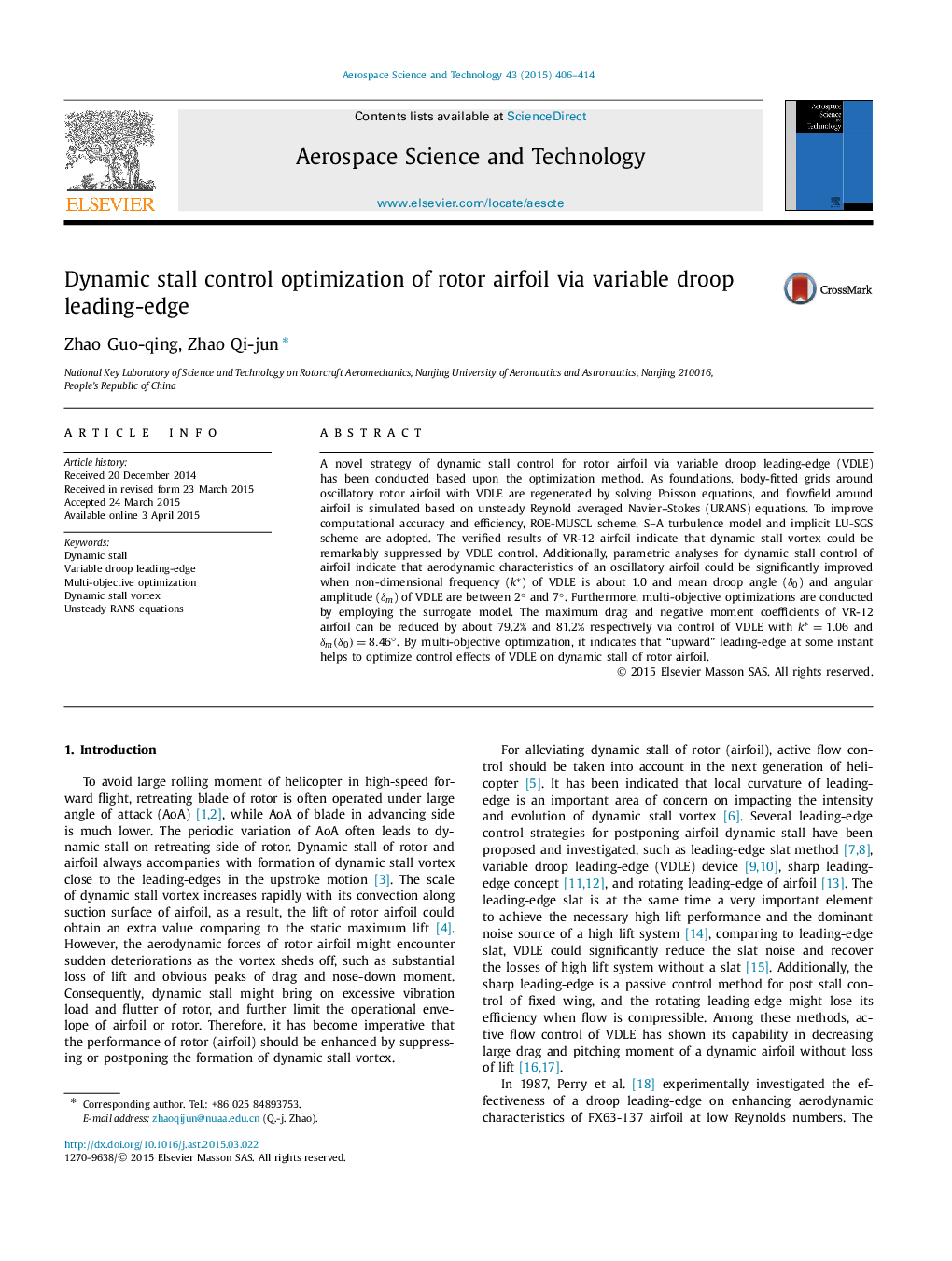| Article ID | Journal | Published Year | Pages | File Type |
|---|---|---|---|---|
| 8059012 | Aerospace Science and Technology | 2015 | 9 Pages |
Abstract
A novel strategy of dynamic stall control for rotor airfoil via variable droop leading-edge (VDLE) has been conducted based upon the optimization method. As foundations, body-fitted grids around oscillatory rotor airfoil with VDLE are regenerated by solving Poisson equations, and flowfield around airfoil is simulated based on unsteady Reynold averaged Navier-Stokes (URANS) equations. To improve computational accuracy and efficiency, ROE-MUSCL scheme, S-A turbulence model and implicit LU-SGS scheme are adopted. The verified results of VR-12 airfoil indicate that dynamic stall vortex could be remarkably suppressed by VDLE control. Additionally, parametric analyses for dynamic stall control of airfoil indicate that aerodynamic characteristics of an oscillatory airfoil could be significantly improved when non-dimensional frequency (kâ) of VDLE is about 1.0 and mean droop angle (δ0) and angular amplitude (δm) of VDLE are between 2° and 7°. Furthermore, multi-objective optimizations are conducted by employing the surrogate model. The maximum drag and negative moment coefficients of VR-12 airfoil can be reduced by about 79.2% and 81.2% respectively via control of VDLE with kâ=1.06 and δm(δ0)=8.46°. By multi-objective optimization, it indicates that “upward” leading-edge at some instant helps to optimize control effects of VDLE on dynamic stall of rotor airfoil.
Related Topics
Physical Sciences and Engineering
Engineering
Aerospace Engineering
Authors
Zhao Guo-qing, Zhao Qi-jun,
